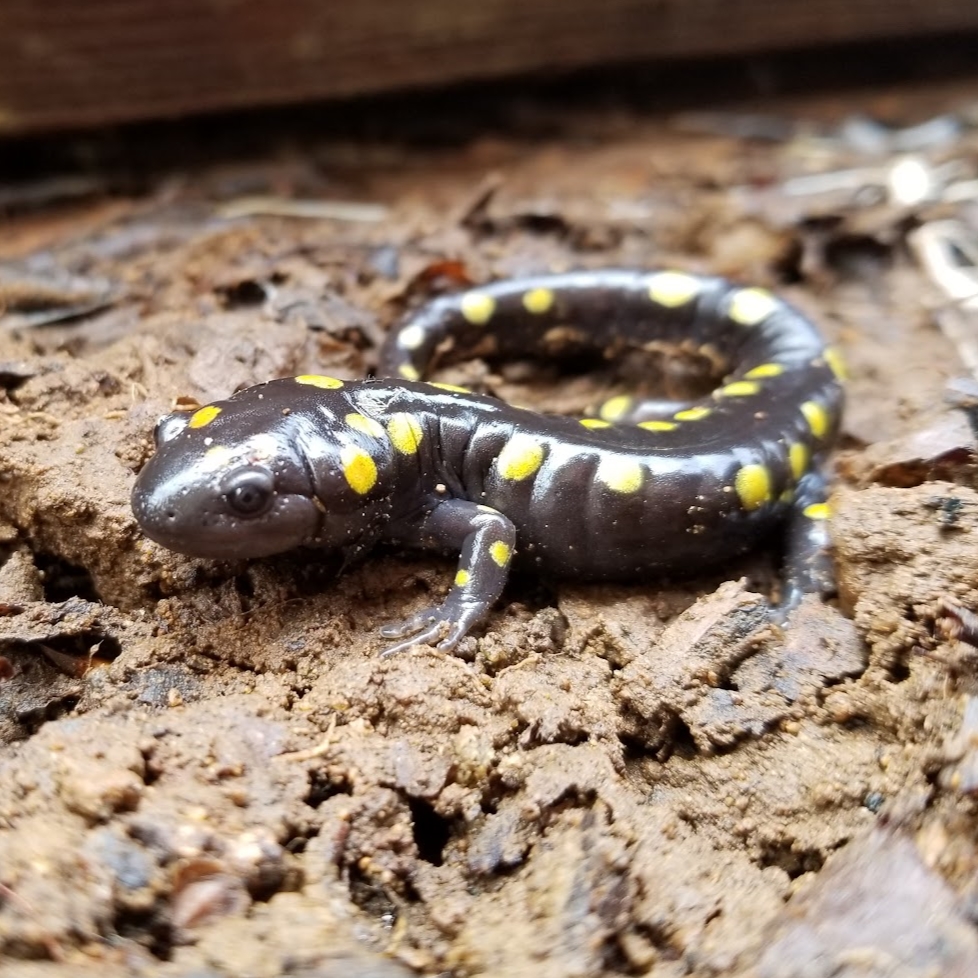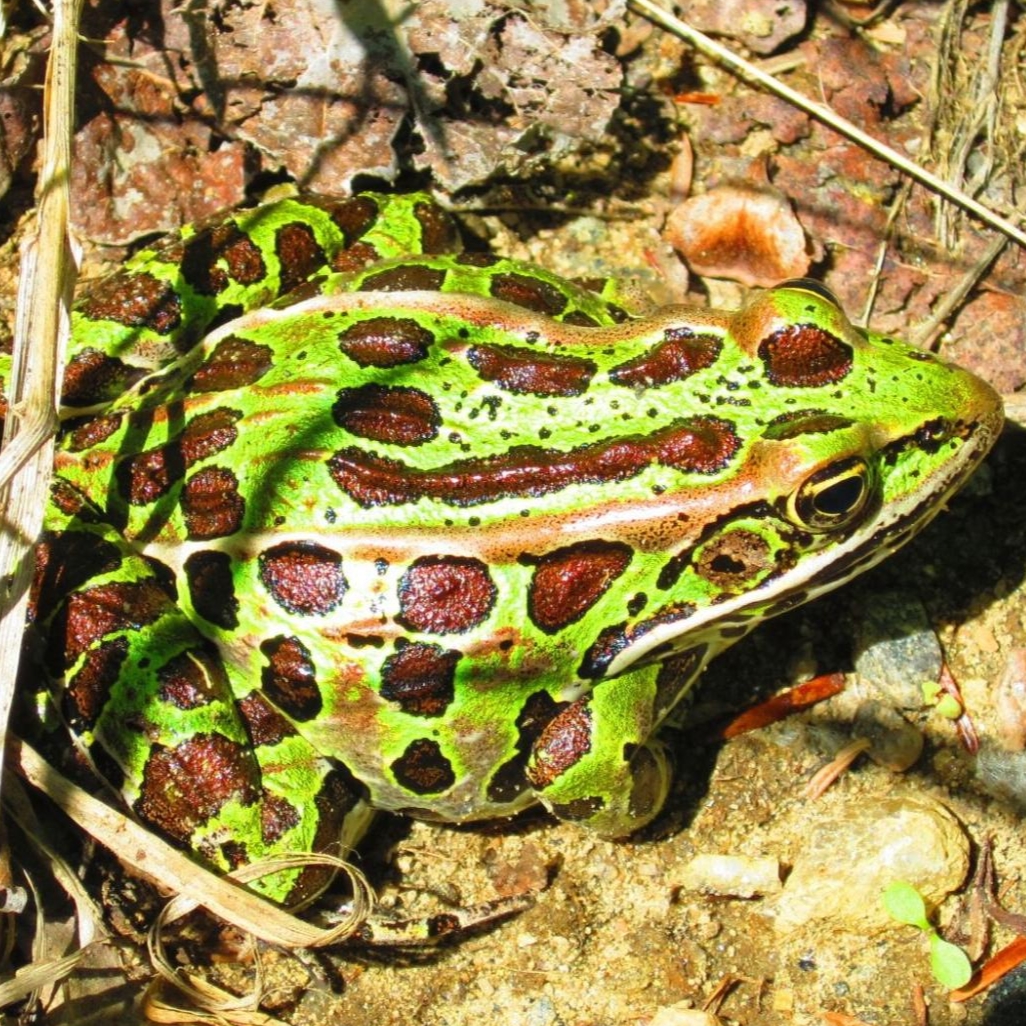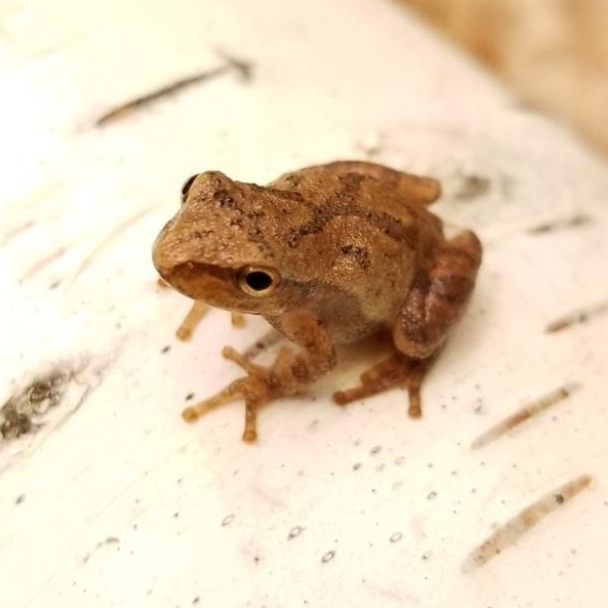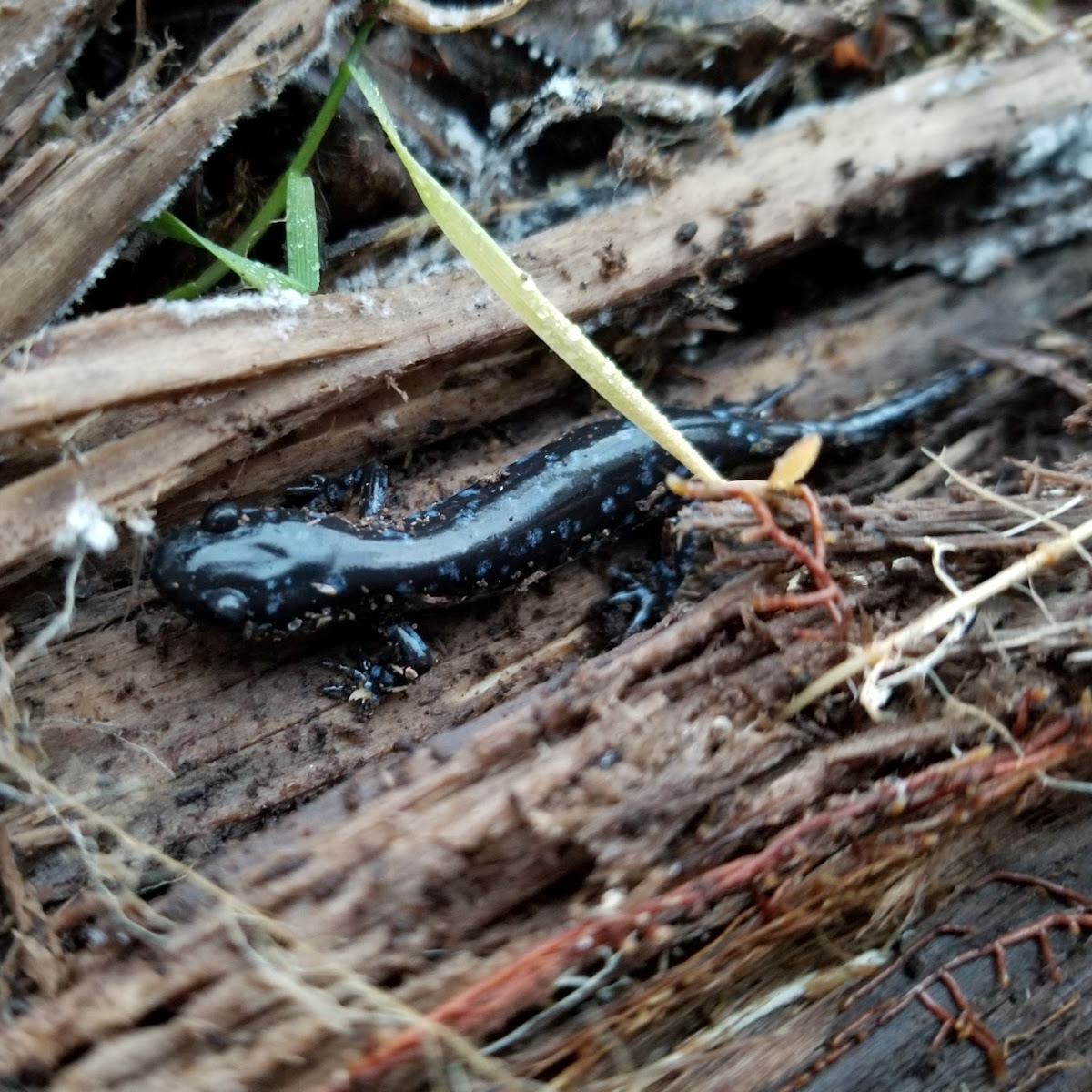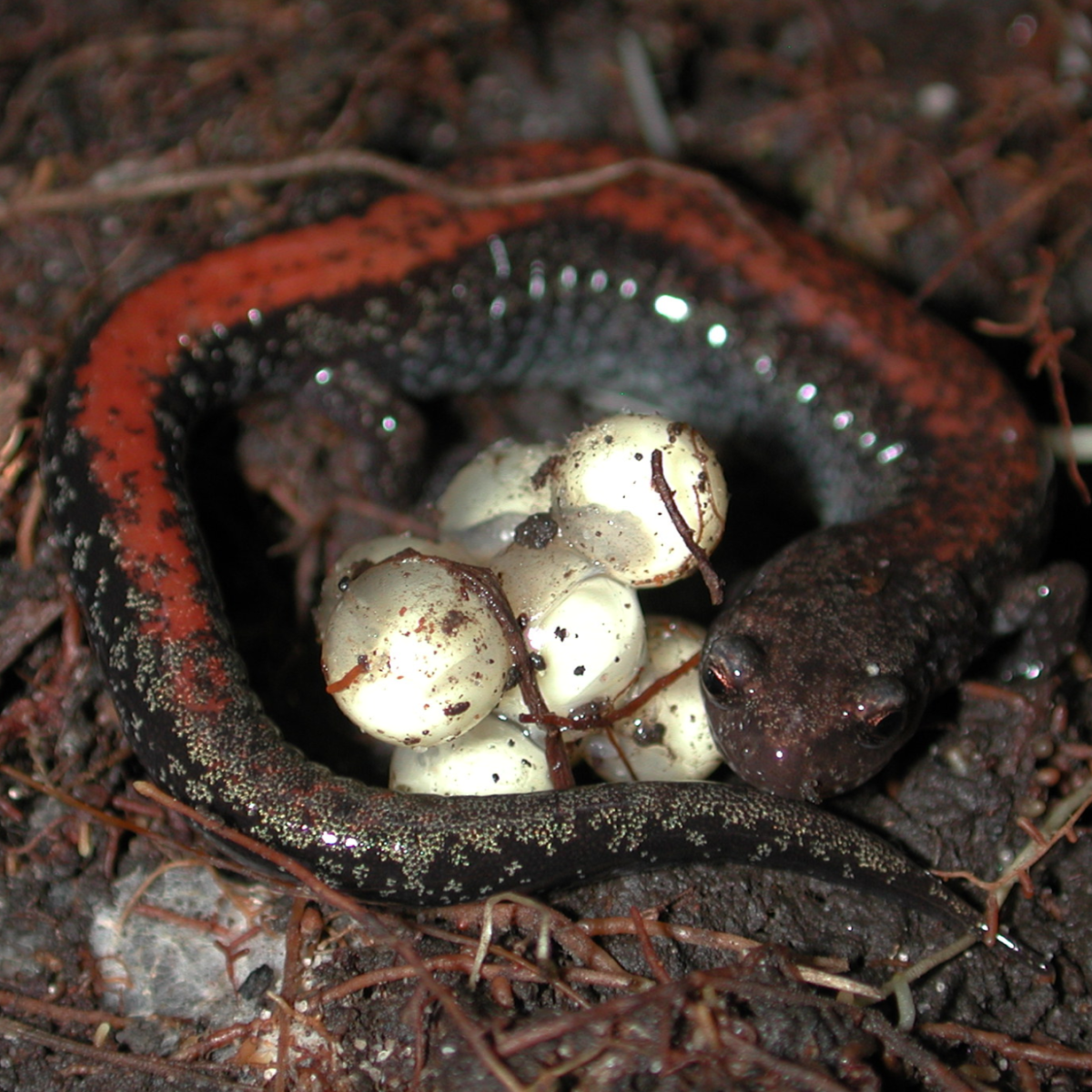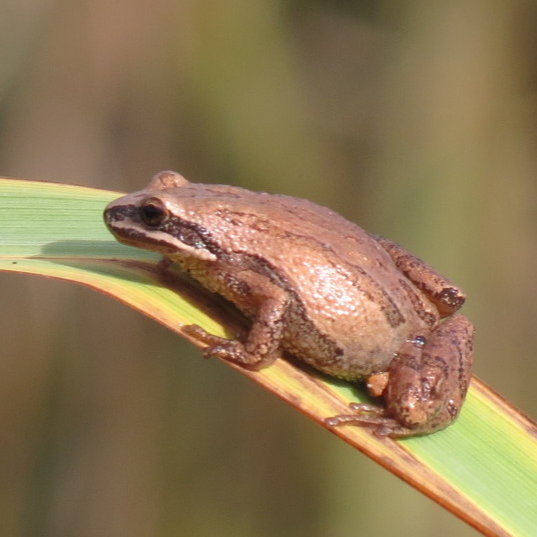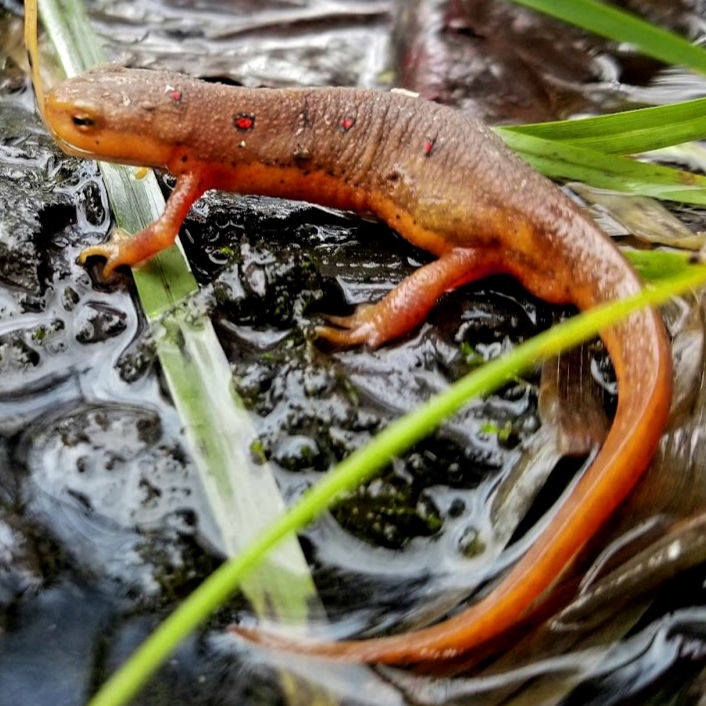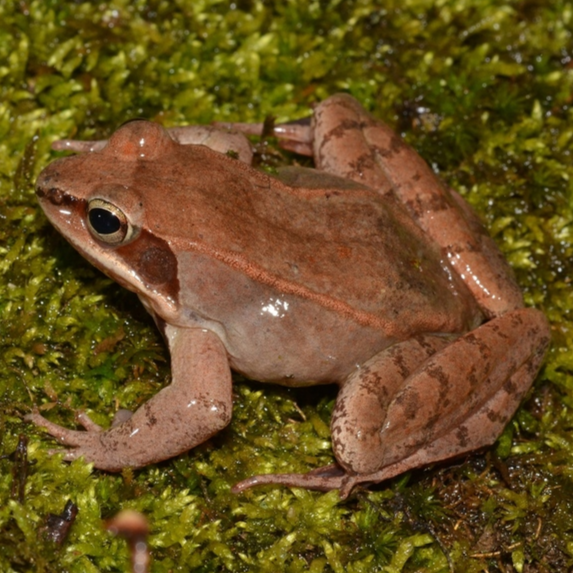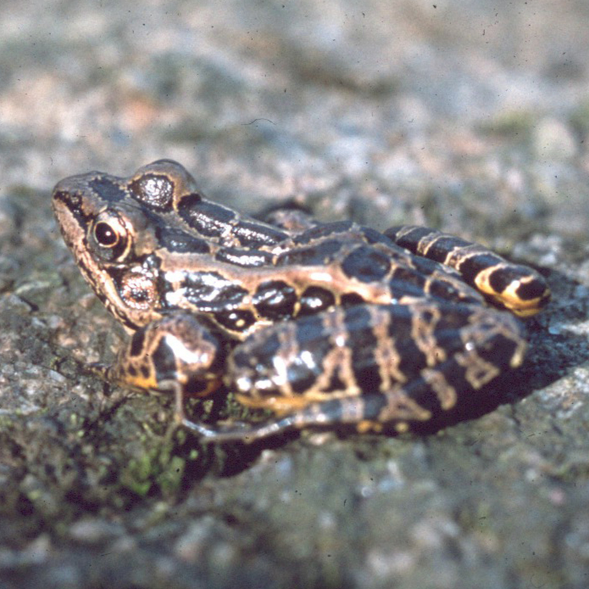Amphibians of The Land Between
Backyard BioBlitz Program
The Land Between is home to an abundance of amphibians including nine frog species and seven salamander species. Our amphibians are generally active from late march to the end of October, and they are very important in controlling insect populations and they provide an abundant food source for secondary predators like birds and snakes. Amphibians are very sensitive to pollution and environmental change so we must watch them closely to make sure that their populations stay healthy and continue to play their important role as a large portion of animal biomass in the food web.
PLEASE NOTE: the Summer, Autumn and Winter pages are currently unavailable because they are under construction.
How to help amphibians on my property
Amphibians are very sensitive to any forms of pollution as they breathe and exchange water through their skin. This means that they are very sensitive to changes in the environment. Thus, if amphibians are present it is a good indication of a healthy environment!
In order to keep amphibians on your property healthy make sure that you preform regular maintenance on your septic system (learn more about septic systems by clicking here) and do not use pesticides or fertilizers. To create habitat consider growing a shoreland garden/naturalizing your shorelands and allowing woody and leafy debris to remain on your property (do not rake leaves or clear forest floors).
Spring Amphibians
Spring is an exciting time in the Land Between! Many species are waking up from their winter slumbers and are starting to get out and about. Amphibians have very interesting overwintering mechanisms, some can even freeze solid in the winter and then thaw out in the spring! Please download and read the protocol and datasheets below before heading out for your Bioblitz.
Salamanders in spring
Spring is an exciting time for all beings in the Land Between! The longer and warmer days means that the snow starts to melt and many species are emerging from their winter strongholds. Spring is the best time to look for salamanders, the cool temperatures and wet days are exactly what these wet slimy critters need to feel comfortable. Not only does the spring have the best conditions during the year for salamanders, it is also the time when salamanders come out of hibernation and many species like the blue spotted and yellow spotted salamander make their way above ground to their breeding ponds before hunkering down underground and undercover for the warm and dry summer months. If you are near a forest pool, or shallow wetland you are likely to see a few salamanders in the spring wandering to this site to breed. In these breeding pools they can be seen in the hundreds or even thousands on some nights in early spring right after ice-out getting their groove on.
Frogs in spring
The sound of spring peepers calling at dusk is a tell tale sign that spring has sprung, hence the name spring peeper. The earliest frogs to arise in spring from hibernation are spring peepers, wood frogs, and chorus frogs all coming out to begin singing their mating calls to find a lover around the time that most of the ice on their ponds has melted. Not too long after these three wake from hibernation and once the water warms slightly the leopard frog and its close relative the pickerel frog will join in during the last few songs of the wood frogs. Having so many frogs all in one place making all kinds of noise and having their minds set on breeding rather than escaping predators makes this time of year the easiest of all to find these species!
Amphibian Activity Sheets
Download and print our activity sheets to have some extra fun learning about and searching for amphibians during your bioblitz!
More information about our featured species!
Blue-Spotted Salamander
(Ambystoma laterale)
Appearance: The blue-spotted salamander is black with blue spots and is usually 10-14cm long.
Months of Most Frequent Encounter: April-May and September-October
Habitat: The blue-spotted salamanders can be found under rotten logs, woody debris, and moist rocky cover or near ponds in the spring and during rain.
Fun Fact: Some blue spotted salamander females can reproduce without mating! These individuals are know as unisexual. These salamanders can also release toxins from their tail.
Eastern Red-Backed Salamander
(Plethodon cinereus)
Appearance: Eastern red-backed Salamanders are slender with black to grey bodies, usually with a red to orange stripe, but sometimes the stripe is absent. When the stripe is absent this is known as their lead phase.
Months of Most Frequent Encounter: April-June and September-October
Habitat: Eastern red-backed salamanders are often found under rotten logs, woody debris, and moist rocky cover or sometimes out walking around during rainfall on cool days.
Fun Fact: Eastern red-backed salamanders can drop their tails when attacked by predators and it will eventually regrow. The eastern red-backed salamander is one of the few salamanders to skip the aquatic stage hatching from eggs on land into small versions of adults.
Eastern Red-Spotted Newt
(Viridecence viridecence)
Appearance: The eastern red-spotted newt is red, orange, green, to brown in colour on top with red spots bordered with black lines. They have a yellow to orange belly and rough skin. The average length of a red spotted newt is 6-10 cm long
Months of Most Frequent Encounter: March-May and September-October
Habitat: Adults are generally found in and around pools and shallow wetlands. Juveniles can be found under rotten logs, woody debris, and moist rocky cover or out walking around during rainfall on cool days.
Fun Fact: Eastern red-spotted newts produce tetrodotoxin the same toxin as pufferfish! Their bright orange and red colours warn predators that they are toxic and can’t be eaten. This is called aposematic colouration.
Northern Leopard Frog
(Lithobates pipiens)
Appearance: The northern leopard frog is usually green, but can be grey-brown in colour. They have a cream coloured underside and black or brown back splotches. They are usually 5-9cm in length. The call of the leopard frog is a chuckling sound similar to the sound made by rubbing a balloon.
Months of Most Frequent Encounter: April-October
Habitat: Leopard frogs are generally found near water and in damp lowlands/shorelands. In the spring they will be near or in shallow wetlands for breeding.
Call: The leopard frogs call sounds like someone rubbing their hands on a wet balloon. Click below to listen.
Fun Fact: Leopard frogs are one of the most common frogs in Ontario, and are the only frog that can legally be used as fishing bait.
Pickerel Frog
(Lithobates palustris)
Appearance: The pickerel frog is very similar to the leopard frog, but is generally only brown and grey in colour, the blotches are more square and under the hind legs is bright yellow. They breed slightly later in spring than leopard frogs.
Months visible: April-October
Habitat: Generally found near water and in damp lowlands. In the spring they will be near or in shallow wetlands for breeding.
Call: The Pickerel frogs call sounds like someone doing a long drawn deep nasal snore. Click below to listen.
Fun Facts: The Pickerel frog will call from underwater making it hard to hear. Pickerel frogs are also Ontario only poisonous true frogs (not toads) secreting poisons from their skin.
Spring Peeper
(Phseudocris Crucifer)
Appearance: Spring peepers are very small, 1.5-3.5 cm long and beige with line patterns on their back with an x shape in the centre. They have sticky pads on their feet.
Months of Most Frequent Encounter: March-May
Habitat: Shallow pools, wetlands and damp lowlands.
Call: Spring Peepers make their calls in the spring that are a high peep..peep..peep.
Fun Fact: In the spring the peeps of thousands of spring peppers will meld together and sound like a long undulating trill, these calls can be so loud some say it can drive you mad if you are too close!
Western Chorus Frog
(Pseudacris triseriata)
Appearance: Western chorus frogs are very small beige or dark brown frogs, similar to the spring peeper but instead of an x shaped marking there are generally three dark coloured broken stripes running down their back. They are usually 1.5-4cm long.
Months of Most Frequent Encounter: March-May
Habitat: Western chorus frogs can be found in shallow pools, wetlands, and damp lowlands
Call: Their call sounds like your fingers running down the teeth of a comb
Interesting Fact: The western chorus frog is a Species at Risk in the Land Between
Wood Frog
(Lithobates sylvaticus)
Appearance: The wood frog is brown to tan with a sometimes coppery sheen. It has triangular black face markings on each side of the head and a white upper lip. The wood frog is usually 3.5-7cm long. The call of the wood frog is a rolling quack kind of like a duck.
Months of Most Frequent Encounter: March-May
Habitat: Shallow pools, wetlands and damp lowlands
Fun Fact: Wood frogs completely freeze in the winter and thaw out in the spring! They can do this because they have a natural antifreeze in their blood.
Yellow-Spotted Salamander
(Ambystoma maculatum)
Appearance: The yellow-spotted salamander is black with yellow and or orange spots and is usually 15-25cm long.
Months of Most Frequent Encounter: March-May and September to October
Habitat: Yellow-spotted salamanders can be found in and around ponds in early spring right at ice out, and under rotten logs, woody debris, and moist rocky cover.
Fun Fact: Yellow-spotted salamander eggs can have a symbiotic relationship with algae—it produces oxygen for the developing young! Yellow-spotted salamanders can live for over 20 years!

